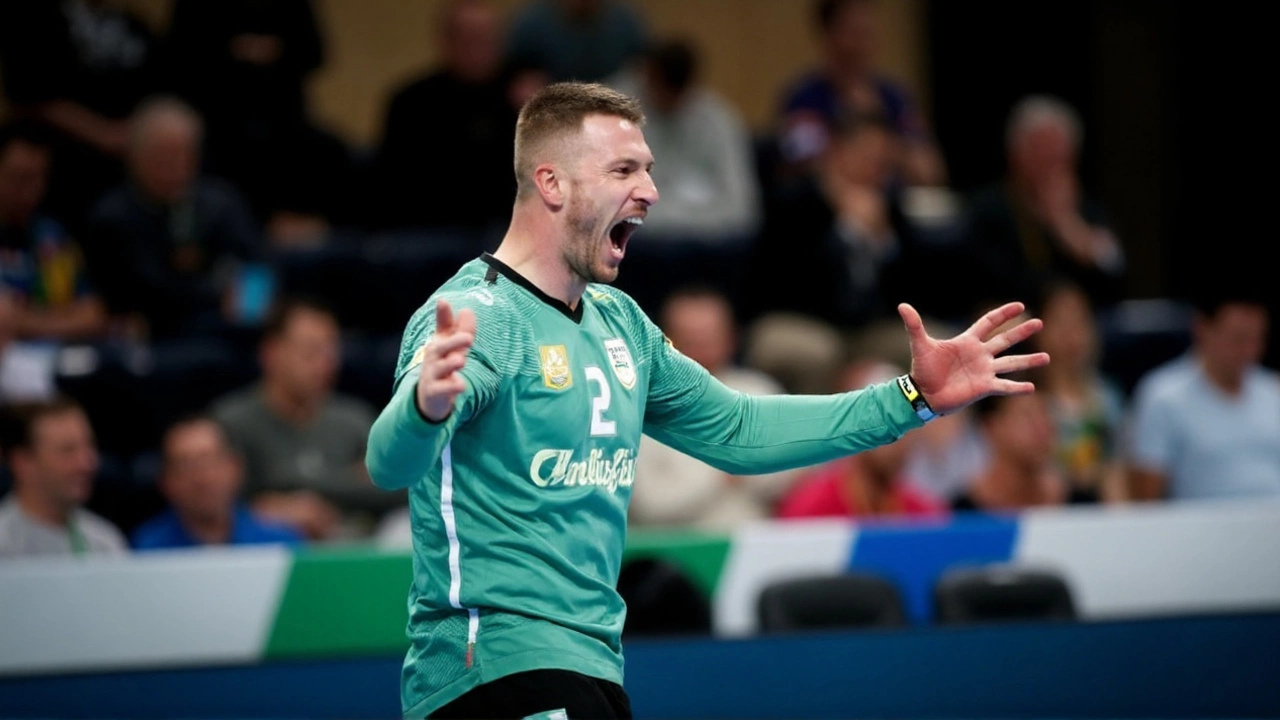 6
Sep,2025
6
Sep,2025
A volley from an impossible angle
Benjamin Sesko didn’t just score for Slovenia—he announced himself. In the 28th minute against Sweden, the 19-year-old met Petar Stojanovic’s lofted pass with a first-time, left-footed volley that sliced the air and tore into the far corner. The angle was tight, the ball was dropping, and he never took a touch to settle it. It was the kind of strike that makes a stadium fall quiet for half a second, then erupt.
The finish instantly drew comparisons to Marco van Basten’s famous Euro 1988 goal—an audacious hit from an awkward angle that defied the physics goalkeepers usually rely on. Like Van Basten, Sesko timed his run early, positioned his shoulders to open up the far post, and made clean, rising contact. The sequence looked simple, but the footwork, balance, and bravery required are anything but.
Slovenia couldn’t turn the highlight into three points. Emil Forsberg levelled for Sweden before the break, and the Nations League match ended 2-2. But the clip of Sesko’s strike spread fast online. “Sesko is a baller,” one fan wrote; another called it “a Van Basten type of volley.” It’s the sort of moment that travels across scouting departments in minutes.
If you’ve watched him at Red Bull Salzburg, the goal didn’t come out of nowhere. Sesko is 1.95m tall, quick over the first few yards, and comfortable finishing off either foot. Salzburg’s system asks its forwards to press hard, run vertical, and finish without fuss. He fits that template. The volley showed a different layer: composure at speed and a clean technique on a dropping ball—traits scouts hunt for when judging ceiling, not just current level.
There’s also the psychology of it. Teenagers don’t often choose the hardest option when a touch would do. Sesko did, and made it look routine. That confidence, when matched with good decision-making, is a marker of a striker who won’t shy away in big games.

Why elite clubs are circling
Interest in Sesko predates this goal. Manchester United and Chelsea have tracked him as part of their long search for a modern No. 9—mobile, direct, and comfortable pressing from the front. Real Madrid have monitored him as they keep building depth behind established stars. He’s been dubbed the “new Haaland,” not because he’s a clone, but because the broad profile overlaps: tall, fast, direct, with a habit of arriving in good zones.
He’s currently contracted to Red Bull Salzburg and had an agreement in place to join RB Leipzig, a well-trodden pathway in the Red Bull model. For a young striker, that’s a logical next step: tougher league, higher tempo, but a familiar philosophy. It’s also a safe way to stack minutes rather than sit behind a superstar and stagnate.
What makes him so appealing to top clubs?
- Movement: He attacks the space between centre-backs early and keeps moving after the first action, which creates second-chance shots.
- Finishing variety: Cut-backs, one-touch volleys, low drives—he doesn’t need perfect setups to hit cleanly.
- Pressing profile: He understands trigger presses and doesn’t switch off between phases, which matters in Premier League and Bundesliga systems.
- Physical upside: At 19, he’s already strong enough to hold off defenders but still has room to add power without losing speed.
Clubs will also look past a single highlight to the trend line. In Austria, he hit consistent double figures in all competitions, not just padding numbers against weaker sides. His chance quality tends to be good because his runs are timed, not hopeful. He’s also shown he can drop in, link quickly, and then burst into space again—small details that help the entire front line function.
For United, the attraction is obvious: they need a focal point who can finish moves without requiring a perfect final ball. For Chelsea, who create spurts of pressure but struggle with conversion, a striker who shoots early and on target changes match states. Both clubs have looked at established names, but the cost of a young forward with upside often makes more sense if the staff believes the development curve will keep rising.
That’s the key question with Sesko: curve, not moment. A Nations League screamer is great; the real value is whether he keeps stacking goals of different types—near-post runs, rebounds, headers under pressure—across a full season in a top-five league. The floor looks high because of his athletic base and pressing intelligence. The ceiling depends on touch consistency in tight spaces, decision speed, and how he handles more physical centre-backs who won’t give him clean first steps.
Back to the goal. The mechanics tell you plenty about his toolkit. He checked his shoulder once as Stojanovic shaped the pass, opened his hips to show the far post, and kept his head still through contact. The strike wasn’t laced wildly—he guided it with power, which is why it stayed true. Those habits are coachable, but they rarely show up this early without hours of repetition.
The Red Bull pathway has produced and polished a list of high-level attackers—Erling Haaland, Sadio Mane, Dominik Szoboszlai—who learned to thrive in systems that demand intensity and direct play. Sesko’s development sits in that tradition. The move to Leipzig, when it lands in full, will offer a tougher read on his ceiling: deeper defensive lines, smarter centre-backs, and less time to set his feet. If he keeps scoring, the bidding wars write themselves.
For Slovenia, the larger story is just as encouraging. A reliable No. 9 changes the way a national team can play. Midfielders can hit earlier passes, wingers can cut inside knowing there’s a target, and defenders can step up because the ball sticks when it goes long. Sesko’s finish against Sweden wasn’t just a showreel clip—it hinted at how Slovenia can threaten better-ranked teams when he leads the line.
Social media will hype any spectacular goal. What separates this one is that it matches the player’s profile. It wasn’t a one-off bicycle kick or a deflection. It was timing, technique, and nerve—all transferable to tougher leagues and tighter games. That’s why United, Chelsea, and Madrid are still watching the same clip, probably replaying the slow-motion angle, and asking the same question: how soon does he do this every other week?




